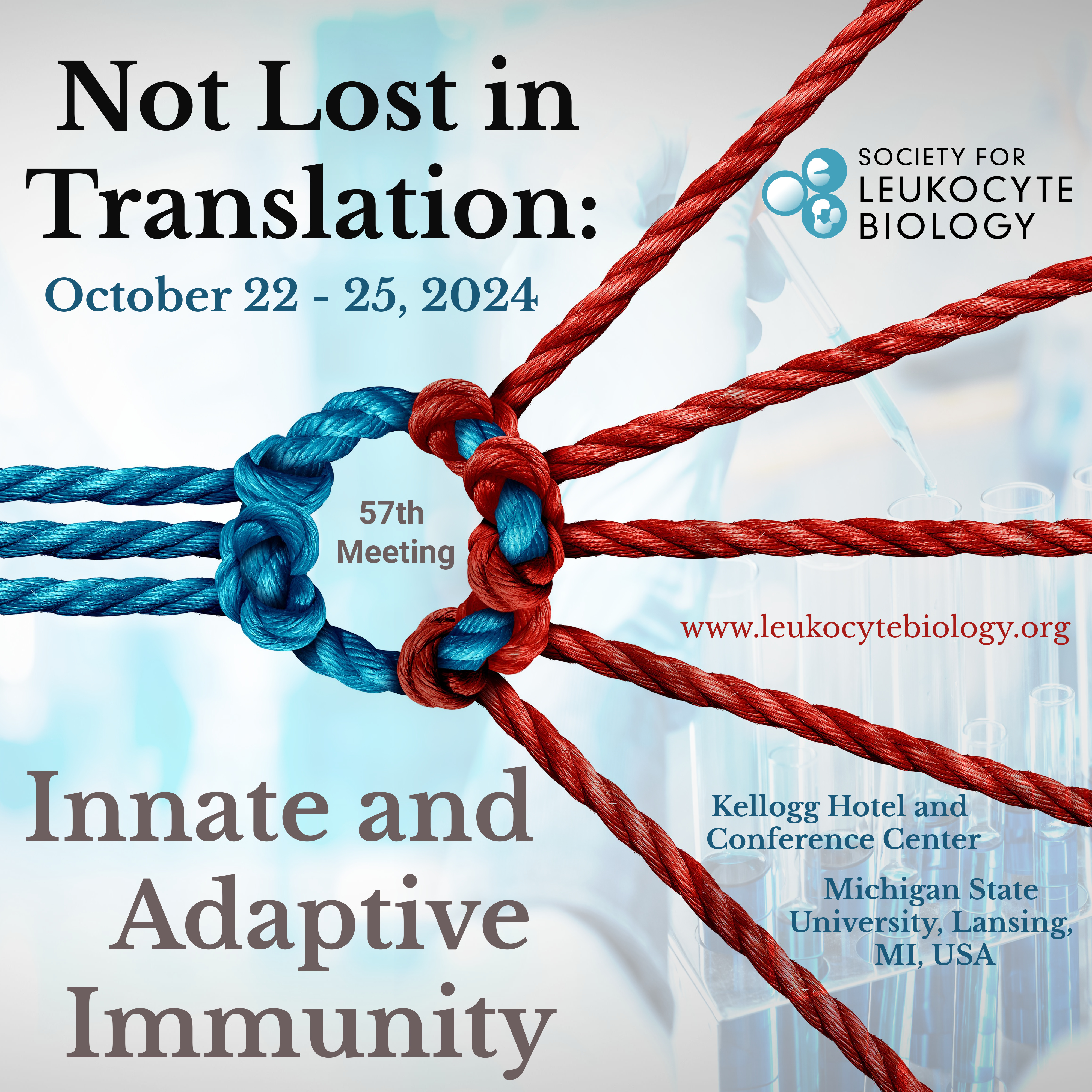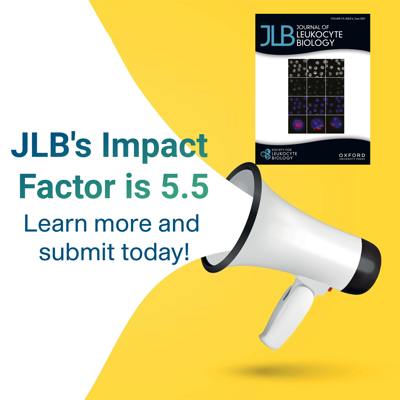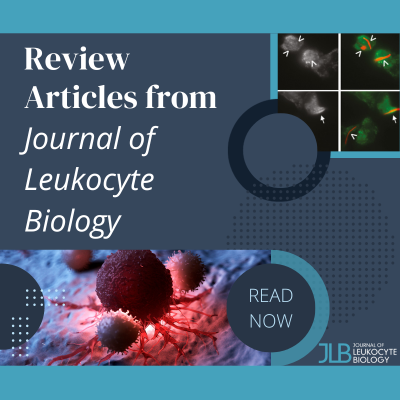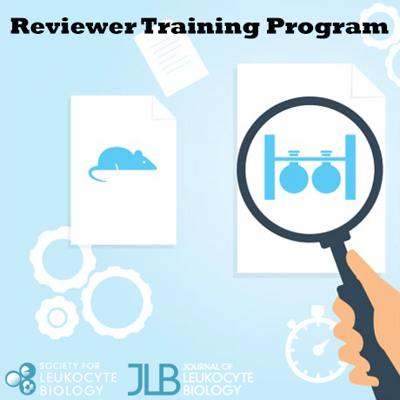| JLB Vol 110 Issue 2 TOC |
ISSUE INFORMATION Issue InformationPages: 207-211 | First Published: 28 July 2021 EDITORIALS Starting‐NOX2‐Up: Rac unrolls p67phox Jamel El-Benna, Pham My-Chan Dang
Pages: 213-215 | First Published: 16 May 2021 Can you teach an old receptor new tricks? Carsten Alexander Raabe, Ursula Rescher
Pages: 217-218 | First Published: 06 November 2020 SPOTLIGHT ON LEADING EDGE RESEARCH The molecular basis of Rac‐GTP action—promoting binding of p67phox to Nox2 by disengaging the β hairpin from downstream residues Edna Bechor, Anat Zahavi, Yevgeny Berdichevsky, Edgar Pick
Pages: 219-237 | First Published: 15 April 2021 2020 Annual Meeting of the Zhejiang Society of Immunology Guest Editors: Linrong Lu, Lie Wang, Di Wang, Yushi Yao, Weilin Chen REVIEWS Follicular regulatory T cell biology and its role in immune‐mediated diseases Yishan Ye, Mowang Wang, He Huang
Pages: 239-255 | First Published: 03 May 2021 Metabolic reprogramming of myeloid‐derived suppressor cells: An innovative approach confronting challenges Xiaoqing Li, Yixue Li, Qinru Yu, Pengxu Qian, He Huang, Yu Lin
Pages: 257-270 | First Published: 02 June 2021 Shanghai: Frontiers in Immunology Science in Major Human Diseases and Treatment Guest Editors: Yiwei Chu, Yuejuan Zheng, Chunfang Gao, Wei Xu, Hanchen Xu, Feifei Luo REVIEWS Gut microbiota shape B cell in health and disease settings Baichao Yu, Luman Wang, Yiwei Chu
Pages: 271-281 | First Published: 11 May 2021 The lymphatic drainage system of the CNS plays a role in lymphatic drainage, immunity, and neuroinflammation in stroke Jinman Chen, Linmei Wang, Hao Xu, Yongjun Wang, Qianqian Liang
Pages: 283-291 | First Published: 22 April 2021 PRIMARY RESEARCH STAT5 promotes chronic pancreatitis by enhancing GM‐CSF‐dependent neutrophil augmentation Yuli Lin, Yusheng Chen, Wenxue Feng, Junfeng Zhang, Rong Hua, Bo Yin, Xuguang Yang
Pages: 293-300 | First Published: 28 June 2021 IFNγ‐mediated repression of system xc− drives vulnerability to induced ferroptosis in hepatocellular carcinoma cells Rui Kong, Nan Wang, Wei Han, Wen Bao, Jie Lu
Pages: 301-314 | First Published: 28 July 2021 Tanshinone IIA enhances susceptibility of non‐small cell lung cancer cells to NK cell‐mediated lysis by up‐regulating ULBP1 and DR5 Yufang Sun, Chenyuan Gong, Zhongya Ni, Dan Hu, Wanyi Ng, Xiaowen Zhu, Lixin Wang, Guifan Si, Xuewei Yan, Chen Zhao, Chao Yao, Shiguo Zhu
Pages: 315-325 | First Published: 28 April 2021 Blood tests predict the therapeutic prognosis of anti‐PD‐1 in advanced biliary tract cancer Fei Du, Zhiquan Qiu, Wenchao Ai, Chenjun Huang, Jun Ji, Xiao Xiao, Jun Zhou, Meng Fang, Xiaoqing Jiang, Chunfang Gao
Pages: 327-334 | First Published: 16 March 2021 Decreased levels of immune‐regulatory cytokines in patients with immune thrombocytopenia and long‐lasting overexpression of these cytokines in the splenectomized patients Xiaofeng Wang, Feng Li, Yang Li, Lihua Sun, Yahong Meng, Xiaohong Fan, Xuelian Wang, Duojiao Wu, Yunfeng Cheng, Fanli Hua
Pages: 335-341 | First Published: 28 July 2021 INFLAMMATION, EXTRACELLULAR MEDIATORS, AND EFFECTOR MOLECULES Inducing regulated necrosis and shifting macrophage polarization with anti‐EMMPRIN antibody (161‐pAb) and complement factors Nizar Hijaze, Max Ledersnaider, Elina Simanovich, Sameer Kassem, Michal A. Rahat
Pages: 343-356 | First Published: 17 November 2020 Monocytes differentiated into macrophages and dendritic cells in the presence of human IFN‐λ3 or IFN‐λ4 show distinct phenotypes Manjarika De, Anand Bhushan, Sreedhar Chinnaswamy
Pages: 357-374 | First Published: 17 November 2020 Annexin A2 regulates unfolded protein response via IRE1–XBP1 axis in macrophages during P. aeruginosa infection Chuan-Min Zhou, Li-Mei Luo, Ping Lin, Qinqin Pu, Biao Wang, Shugang Qin, Qun Wu, Xue-Jie Yu, Min Wu
Pages: 375-384 | First Published: 22 November 2020 TRANSLATIONAL AND CLINICAL IMMUNOLOGY Persons who inject drugs (PWID) retain functional NK cells, dendritic cell stimulation, and adaptive immune recall responses despite prolonged opioid use Costin Tomescu, Krystal Colon, Peter Smith, Mack Taylor, Livio Azzoni, David S. Metzger, Luis J. Montaner
Pages: 385-396 | First Published: 02 December 2020 ERRATUM Flow cytometric evaluation of the neutrophil compartment in COVID‐19 at hospital presentation: A normal response to an abnormal situationPages: 397-398 | First Published: 28 July 2021 |























